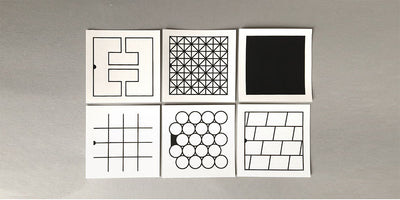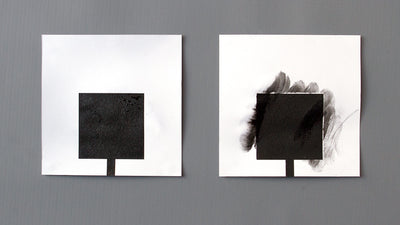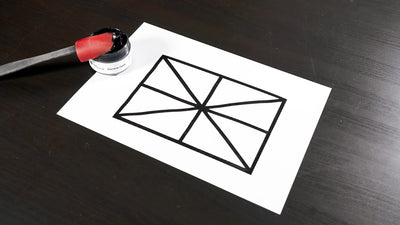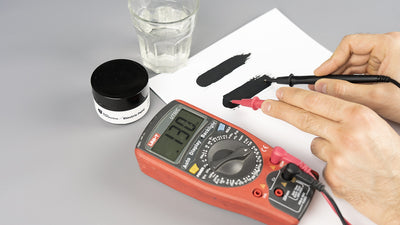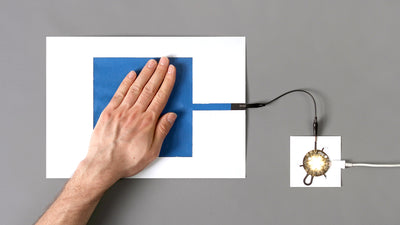How to stencil with Electric Paint

Learn how to create intricate designs easily with a stencil and Electric Paint
Stenciling is a great and easy way to create crisp graphics with Electric Paint and make your own sensors. There are lots of ways to create stencils, from simple masking tape to a custom-cut vinyl graphic. For this tutorial, we will show you what's possible with a vector graphics tool, some vinyl, and a cutting machine. But no matter how you create your stencil, you'll need Electric Paint and brushes to bring it to life. You can stencil on any flat surface to which the paint can adhere. You don't need to apply a base coat or a primer. For this tutorial, we used thick paper, but you can use a wide range of surfaces.
We love it when you share your projects! Post your project on Instagram, YouTube, or Twitter, and make sure to tag @bareconductive or use #bareconductive. You can also send your videos and photos to info@bareconductive.com so we can post them on our site for the world to see.
You will need:
- Electric Paint 10ml, 50ml or 1l
- Stencil material of your choice (masking tape, self-adhesive vinyl, etc.)
- Sundry painting supplies
Step 1 Prepare the stencil
First, you need to create your stencil. You can design your graphics with a vector graphics editor, for example Adobe Illustrator, and then use a cutting machine to cut your design onto vinyl. In this example, we kept the design easy and just made a circle.

Step 2 Create the stencil
Before you can apply the stencil to your surface, you need to cover the vinyl with masking tape in order to hold the graphics in place when transferring the vinyl to your surface. It helps to fluff the masking tape on some textile to avoid it ripping the vinyl off the surface later. Once covered, carefully peel the adhesive back of your vinyl from one corner. Apply the vinyl to your surface beginning from the corner, and slowly pull away the adhesive back of the vinyl, while simultaneously pressing down the vinyl. Then, remove the masking tape, and finally the parts you plan on stenciling onto the paper.
Step 3 Stencil with Electric Paint
With your vinyl placed down, you can either use a stenciling brush, a stencil roller or a sponge to apply the paint. If you are using a stenciling brush, dip it into some Electric Paint and dab the paint onto the stencil at a 90˚ angle. If you are using a stencil roller, dip it in some Electric Paint and cover the stencil with it. In case you want to use a sponge for stenciling, dip the sponge in some Electric Paint and dab it onto the stencil. Continue stenciling until you have completely and evenly covered the stencil, and if necessary, apply multiple coats of paint. Remove the stencil from the paper before the paint has dried, otherwise, the paint might crack. Leave the paint to dry for about 15 minutes.
Step 4 Paint the stencil with Electric Paint
If you are using a larger stencil design, you might want to dilute the Electric Paint a bit to get a larger cover and speed up the stenciling. Check out how to dilute Electric Paint to find out more.
Step 5 Next steps
You can use this stenciling method to create sensors with Electric with one of our boards. Next, you can either cold solder to the board or create a connection to the back of your surface to connect the paint to the electrodes behind the surface. Also, it's good practice to seal the paint to avoid smudging. You can learn more about sealing the paint with acrylic spray in our how to seal Electric Paint tutorial.


